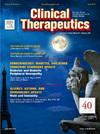性与性别在精准急诊医学中的作用:范围综述与拟议层次。
IF 3.6
4区 医学
Q2 PHARMACOLOGY & PHARMACY
引用次数: 0
摘要
背景:精准医学利用患者的个人数据来指导决策。性别与性别医学同样关注患者的生理性别或社会文化性别,将其视为疾病的决定因素。这两个领域如何相互交叉以及如何与急症护理医学交叉尚不清楚:我们利用《系统综述和Meta分析范围界定综述的首选报告项目》进行了范围界定文献综述,评估了三个相关领域的主要研究:性与性别医学、急诊医学和精准医学。我们搜索了六个数据库,筛选出符合条件的研究纳入其中。我们对纳入的研究进行了全面审查,并使用标准化数据提取表对研究特征进行了汇总。研究问题由工作组成员起草,并由共识会议的所有与会者进行排序:共筛选出 401 项研究供纳入。结果:共筛选出 401 项研究供纳入,其中 70 项符合纳入标准,并进行了全文评估。大多数研究(84%,59/70)对性别进行了评估,只有 16%(11/70)对性别进行了评估。最常见的临床主题是心血管疾病和创伤/伤害预防,占收录稿件的 50%(35/70)。累计而言,77%(54/70)的稿件引用了至少一个资金来源。绝大多数研究(66/70,94%)被收录是因为其统计分析考虑了性别因素,极少数研究(4/70,6%)被收录是因为其使用了生物标记或基因组数据:结论:基于性别的医学和研究通常采用精准医学的概念来评估各种临床专题领域中性和性别的影响,但这些文献中的大部分并没有被普遍描述为精准医学。我们提出了一个层次结构,用于分类、标记和推进性别精准医学研究。这一进步的基础是实施有关正确使用性别和社会性别的指导原则,并继续为性别和社会性别的精准医学研究提供研究资金。本文章由计算机程序翻译,如有差异,请以英文原文为准。
The Role of Sex and Gender in Precision Emergency Medicine: A Scoping Review and Proposed Hierarchy
Background
Precision medicine utilizes individual patient data to guide decision making. Sex and gender medicine is likewise focused on individual patients’ biological sex or sociocultural gender as determinants of disease. How these two fields intersect with one another and with acute care medicine is unclear.
Methods
We conducted a scoping literature review utilizing the Preferred Reporting Items for Systematic Reviews and Meta-Analyses for Scoping Reviews to evaluate the primary research in three related areas: sex & gender medicine, emergency medicine, and precision medicine. We searched six databases and screened eligible studies for inclusion. Included studies were reviewed in full, and study characteristics were compiled using a standardized data extraction form. Research questions were drafted by workgroup members and ranked by all participants of the consensus conference.
Results
A total of 401 studies were screened for inclusion. Of these, 70 met inclusion criteria and were evaluated in full text. The majority (84%, 59/70) reported evaluating sex, whereas only 16% (11/70) reported evaluating gender. The most common clinical topics were cardiovascular diseases and trauma/injury prevention, comprising 50% (35/70) of the included manuscripts. Cumulatively, 77% (54/70) of the manuscripts reviewed cited at least one funding source. The vast majority (66/70, 94%) of studies were included because their statistical analysis accounted for sex or gender, and very few studies (4/70, 6%) were included due to their use of biomarker or genomic data.
Conclusions
Sex- and gender-based medicine and research commonly employ precision medicine concepts to evaluate the effects of sex and gender in a variety of clinical topic areas, but much of this literature is not commonly described as precision medicine. We propose a hierarchy to categorize, label, and advance sex and gender precision medicine research. Fundamental to this advancement are implementation of guidelines regarding the correct use of sex and gender and continued research funding for sex and gender precision EM research.
求助全文
通过发布文献求助,成功后即可免费获取论文全文。
去求助
来源期刊

Clinical therapeutics
医学-药学
CiteScore
6.00
自引率
3.10%
发文量
154
审稿时长
9 weeks
期刊介绍:
Clinical Therapeutics provides peer-reviewed, rapid publication of recent developments in drug and other therapies as well as in diagnostics, pharmacoeconomics, health policy, treatment outcomes, and innovations in drug and biologics research. In addition Clinical Therapeutics features updates on specific topics collated by expert Topic Editors. Clinical Therapeutics is read by a large international audience of scientists and clinicians in a variety of research, academic, and clinical practice settings. Articles are indexed by all major biomedical abstracting databases.
 求助内容:
求助内容: 应助结果提醒方式:
应助结果提醒方式:


